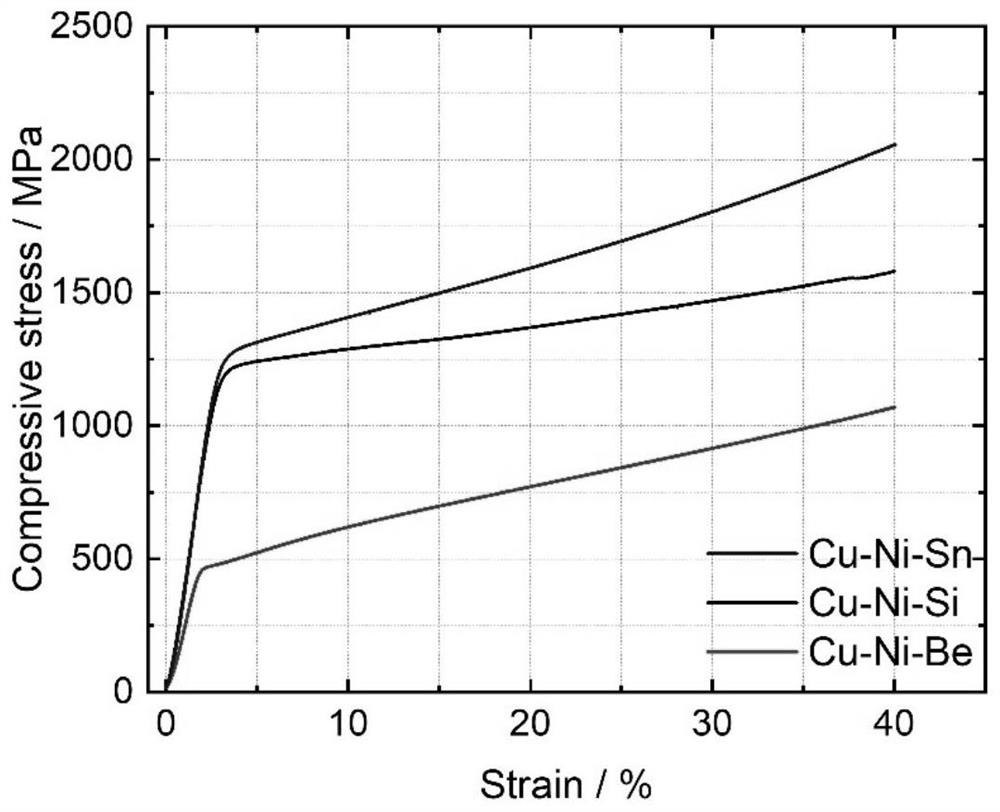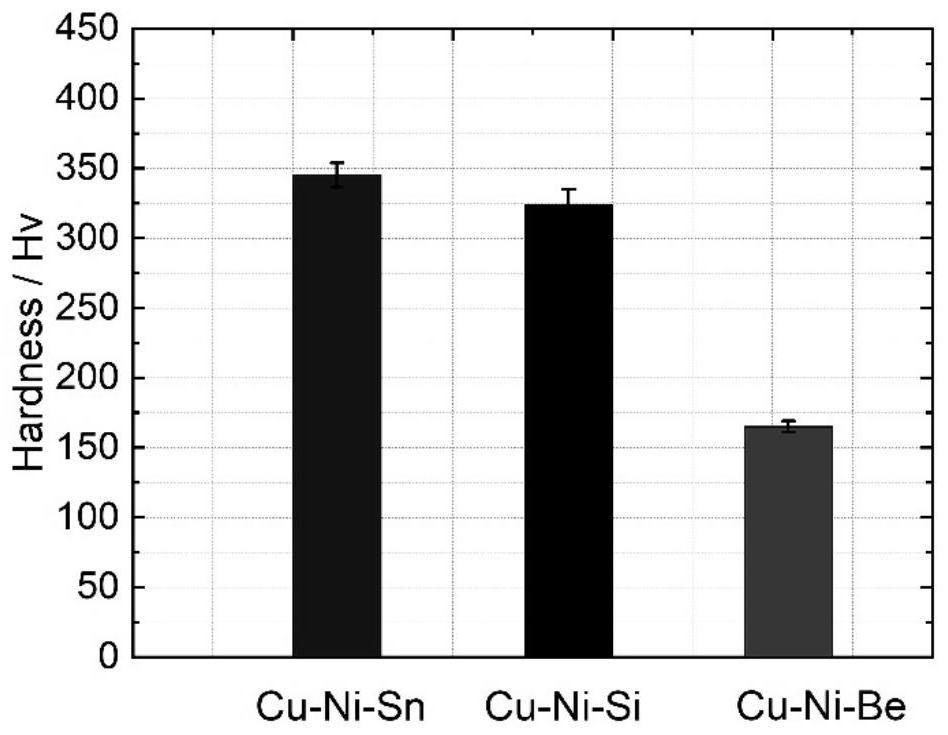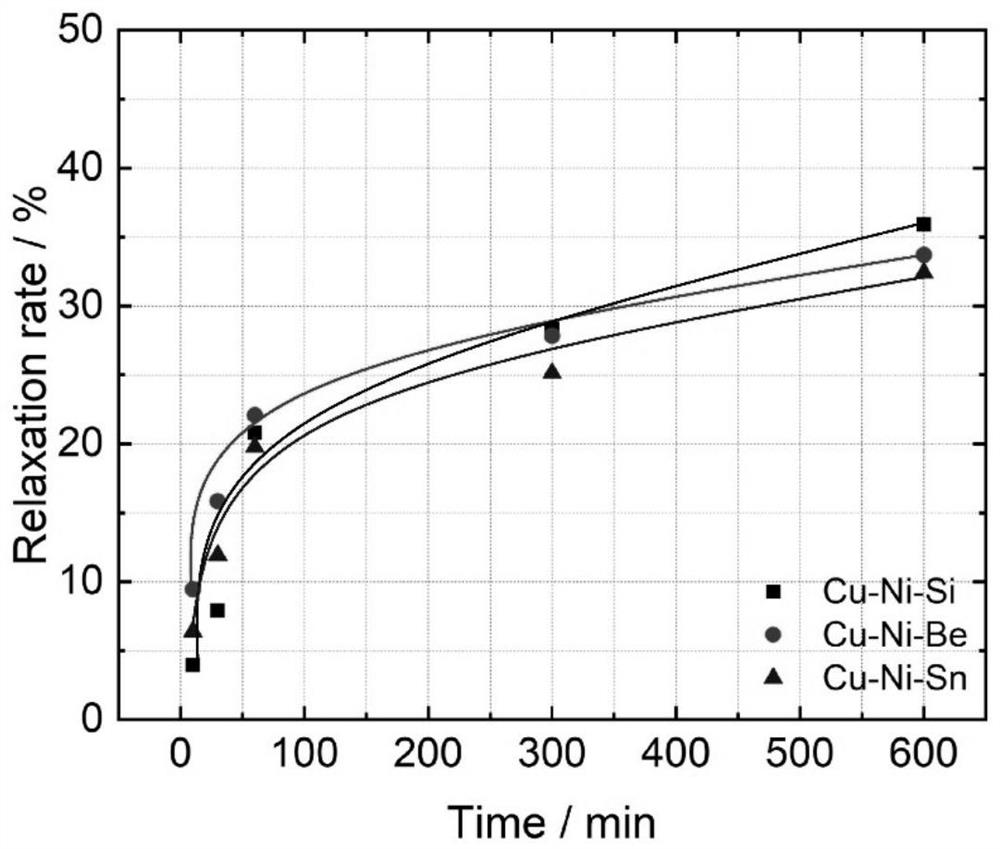Method for comparing stress relaxation resistance of metal material
A metal material, anti-stress technology, applied in the direction of analyzing materials, testing material hardness, using stable tension/pressure testing material strength, etc., to achieve the effect of saving experiment time and cost
- Summary
- Abstract
- Description
- Claims
- Application Information
AI Technical Summary
Problems solved by technology
Method used
Image
Examples
Embodiment 1
[0024] In this example, Cu-Ni-Sn, Cu-Ni-Si, and Cu-Ni-Be alloys are used as examples to predict copper alloys with optimal stress relaxation resistance. The specific steps are as follows:
[0025] Step 1: Conduct quasi-static compression and Vickers indentation experiments at room temperature with a compression strain rate of 10 -3 the s -1 , the measured quasi-static compressive yield strength σ scs , and hardness HV (such as figure 1 and figure 2 shown);
[0026] Step 2: Compare the compressive yield strength and Vickers hardness of the three copper alloys, wherein the copper alloy with the highest yield strength and hardness is the Cu-Ni-Sn alloy. However, in the stress relaxation test under the two conditions, the Cu-Ni-Sn alloy has the best stress relaxation resistance, and the prediction is consistent with the experimental results (reference Figure 3-5 ).
PUM
 Login to View More
Login to View More Abstract
Description
Claims
Application Information
 Login to View More
Login to View More - R&D
- Intellectual Property
- Life Sciences
- Materials
- Tech Scout
- Unparalleled Data Quality
- Higher Quality Content
- 60% Fewer Hallucinations
Browse by: Latest US Patents, China's latest patents, Technical Efficacy Thesaurus, Application Domain, Technology Topic, Popular Technical Reports.
© 2025 PatSnap. All rights reserved.Legal|Privacy policy|Modern Slavery Act Transparency Statement|Sitemap|About US| Contact US: help@patsnap.com



